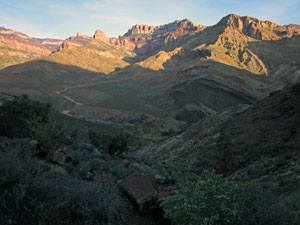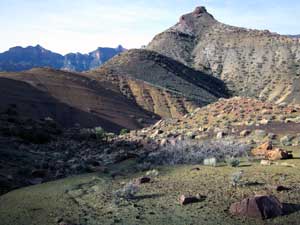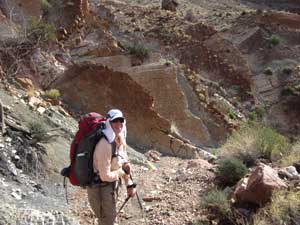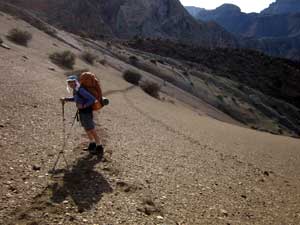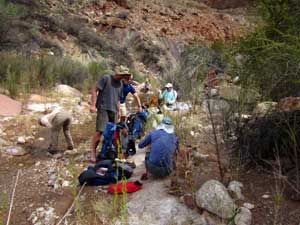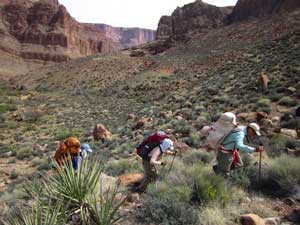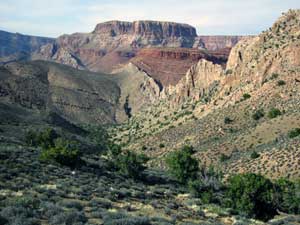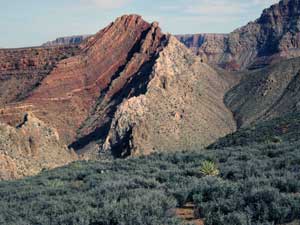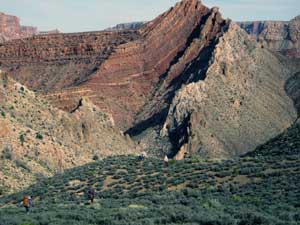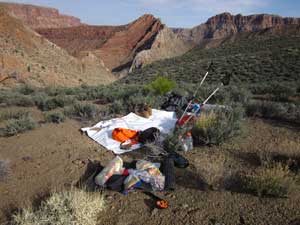|
Day 2 April 4, 2013 Nankoweap Creek to Malgosa - Awatubi Saddle |
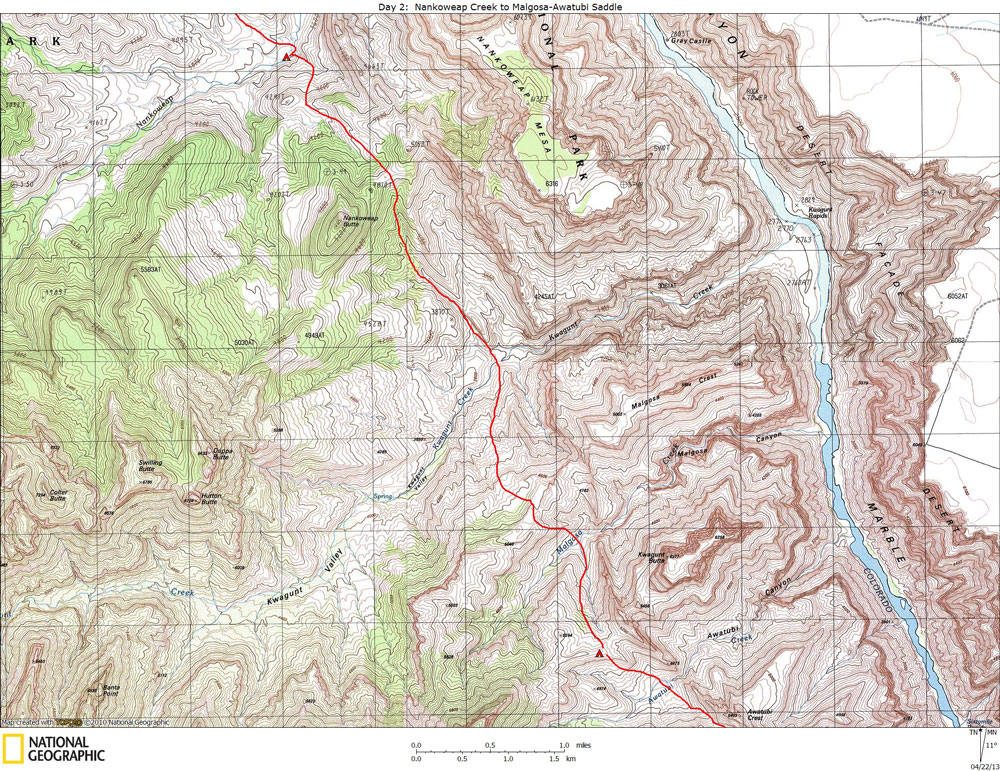 |
|
Click on photos to see larger image. Today's route stats: Distance: Difficult to determine off-trail miles, but probably about 6. Elevation Gain: 3500 feet Elevation Loss: 1900 feetToday began the Butte fault section of the hike. The fault in this area runs parallel with the Colorado River, and roughly 1-1/2 to 2 miles from the river. The land on the west side of the fault rose relative to the east side of the fault. This uplifting and bending along the fault resulted in a long stretch of hogbacks. The route parallels the west side of these hogbacks. The river is inaccessible between Malgosa and Carbon. We were expecting a difficult day. Not only is 3500 feet a lot of elevation gain, but we needed to pick up enough water at Kwagunt Creek for a dry camp, and for all day the next day too. There is no reliable water between Kwagunt and Lava Creeks. And there is no reasonable access to the river anywhere between Malgosa and Carbon Creeks. However, on a trip in October, 2010, we spent an unplanned night at a small seep spring in Malgosa, not too far down from the Butte fault. But because it is a very small seep, it's reliability unknown, and because it had been pretty dry for weeks prior to our hike, we decided to pick up water at Kwagunt and not even look for water in Malgosa. There are a variety of ways to get over the ridge between Nankoweap and Kwagunt, and I have done a few of them. Our goal was the saddle between Nankoweap Mesa and Nankoweap Butte that is closest to Nankoweap Butte (less than 1/2 mile NE of the butte). Many people believe the horse thieves traveled west of Nankoweap Butte where the going would be much easier for horses. Apparently horse shoes have been found along that section.
|
